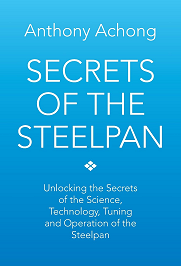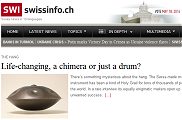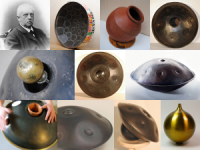A book review by Felix Rohner about Anthony Achong’s standard work was published today on www.gubal.ch  :
:

With ‘Secrets of the Steelpan – Unlocking the Secrets of the Science, Technology, Tuning and Operation of the Steelpan’ Achong is presenting his life’s work, a summary of his extensive studies on the steelpan. The retired professor of physics at the University of the West Indies has spent a lifetime with the sounding sheet metal. He knew and consulted a lot of steelpan builders and tuners, carried out countless experiments and gave lessons for students and instrument makers. Every tuner that dares to approach the work on the sheet metal and is willing to learn will be able to largely benefit from this book. It is truly the standard work for steelpan building.
Anthony Achong’s “The Secrets of the Steelpan” 
A Review by Felix Rohner
 The PANArt tuners were quite cautious in recent years when journalists asked for interviews or visits for radio or television documentaries. Usually their requests were rejected. Sabina Schärer and Felix Rohner weren’t interested in too much popularity.
The PANArt tuners were quite cautious in recent years when journalists asked for interviews or visits for radio or television documentaries. Usually their requests were rejected. Sabina Schärer and Felix Rohner weren’t interested in too much popularity.